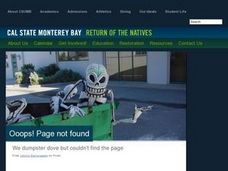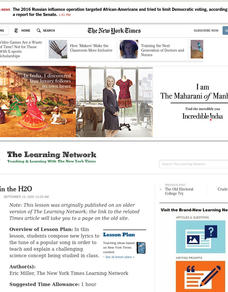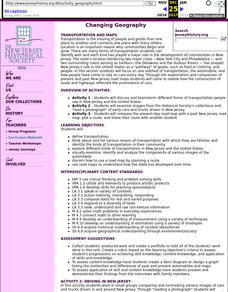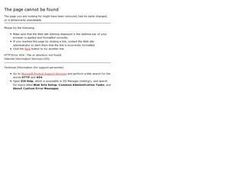Curated OER
Weedy Socks & Wheels
Students engage in a lesson plan that is concerned with the concept of using socks in order to collect weed seeds. They conduct research in order to illustrate the ease of how weeds are spread from one area to another. Students conduct...
Curated OER
Soil Comparison and Analysis
Students perform tests on different soil samples. For this earth science lesson, students classify the soil into groups according to test results. They write a lab report following a certain criteria.
Curated OER
Dramatic Feelings (any)
Students examine a feeling word and represent it in a dramatic presentation. Through this, students present and observe the different situations that different feelings can exist in.
Curated OER
Dramatic Feelings
Students examine a feeling word and represent it in a dramatic presentation. Through this, students present and observe the different situations that different feelings can exist in.
Curated OER
Stories That Grow on Trees
Students write their own choose-a-plot book. They develop skills in creating plot structure and think through a logical line of story action. They invent characters with striking physical and psychological attributes.
Curated OER
Singing in the H2O
Learners compose new lyrics to the tune of a popular song in order to teach and explain a challenging science concept being studied in class.
Curated OER
Changing Geography
Pupils visually examine, identify and analyze the components of various images of the automobile. They discern how to use a road map by planning a route, then use road maps to explain how the state has developed over time.
Curated OER
A Union Soldier's View of the Battle of Raymond
Students use a primary resource to collect information about a Civil War battle. They identify similarities and differences between historical wars and modern wars.
Curated OER
Stories That Grow on Trees
Students create their own plot-choice story after reading and discussing a commercially published plot-choice book.
Curated OER
Building a Mini-park And Bird Sanctuary Lesson 3: Location, Location, Location
Students work cooperatively using the democratic process to select a place for a park. They identify how the garden in the park will look. They write a five paragraph essay as an assessment.
Curated OER
Fight for Freedom
Students research examples of slavery in the world today, and explore some ways they can help current slaves gain their freedom. After students develop a plan for helping to fight slavery, they take action.
Curated OER
Fortunately, An Analogy
First graders produce a writing based on the story, "Fortunately,". They publish it as a slide show.
Curated OER
Slavery in the United States
Students research slavery in the United States and present their findings as a newscast with appropriate visuals to the class.
Curated OER
Lesson Plan 2--3000 B.C. to 2000 A.D.?
Students, in groups, study the different writing systems from 3000 B.C. to 2000 A.D.
Curated OER
Don't Throw Away That Junk Mail!
Fourth graders study junk mail to learn the techniques that advertisers use to attract and hold a person's attention.
Curated OER
Do a Ditty
Fourth graders work in cooperative groups to create a ditty to teach the characteristics that distinguish literary forms to younger students. The ditty is performed before the class.
Curated OER
Down by the Bay
Students listen to teacher read books about fish and participate in activities in order to explore how to identify bluefish. They count and graph the numbers of fish they find in simulated fishing activities.
Curated OER
Traveling to Japan: Which Way Do We Go?
Fourth graders explore the different types of ways to measure the distance between Florida and Japan.
Curated OER
Va Va Va Zoooommm
Students, in groups, measure a variety of physical components to several activities. They use both standard and non-standard forms of measurement and then develop conclusions about the use of units in measurement.
Curated OER
Something Fishy
Students identify and discuss the adaptive characteristics and behaviors of fish. They view slides of fish, and design and create a model of a fish of the future, listing the ways their fish adapt to survive.
Curated OER
Collecting Data and Graphing
Eighth graders, in groups, count the different colors of M&M's in each kind of package and then draw a pictograph to show the results. Each group writes a program to show their results and then compare the manually-drawn and computer...
Curated OER
Equal Shares for Each Province
Students investigate fairness, equality, and representation in the Canadian Parliament. The concepts are explored within the context of equal distribution of boxes of cereal to various groups.
Curated OER
Media Scrapbook
Learners analyze the fundamental issues relating to Canadian parliamentary democracy through the exploration of media and public opinion. A scrapbook is created containing summaries of the work performed.
Curated OER
Introduction to the Democratic Process
Students, in groups, discuss the structure and the function of the Canadian Parliament. They create a poster and present it to the class.

























